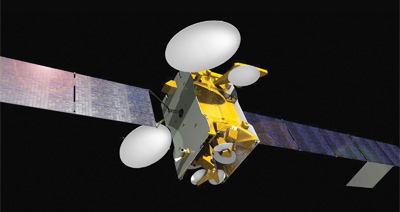SES 10 (original) (raw)

SES 10 [Airbus Defence and Space]
SES ordered in February 2014 the SES 10 comsat to expand SES�s capabilities in Latin America and the Caribbean through high power beams tailored to provide direct-to-home broadcasting, enterprise and broadband connectivity services in the entire region.
SES-10�s comprehensive coverage includes Mexico, Central America and South America, as well as the Caribbean. The satellite will be positioned at the 67� West orbital position, pursuant to an agreement between the Andean Community (Bolivia, Colombia, Ecuador and Peru) and SES, which provides for use of the Andean Community�s Simon Bolivar 2 satellite network. The specifically designed beam of SES-10 over the Andean Community Member States, combined with its optimum elevation angle, represents a unique proposition for telecommunications operators, broadcasters and service providers for the Andean countries.
With 50 high-power Ku-band transponders, the satellite will provide replacement capacity for the current satellites, AMC-3 and AMC-4, as well as incremental capacity at the 67� West slot. SES has been providing key services to customers in the region from this orbital slot since 2010. SES-10 will be built by Airbus Defence and Space based on the Eurostar-3000 platform. The satellite is designed to operate for 15 years in geosynchronous orbit, utilizing an electric plasma propulsion system for on-orbit manoeuvres and a chemical system for initial orbit raising and some on-orbit manoeuvres. SES-10 will have an electrical power of 13 kW and its launch mass on Falcon-9 is expected to be about 5300 kilograms. The satellite will also fly Flexible Command Receivers, whose frequency agility provides for more robust satellite command link operations.
SES-10 is slated for launch on board a SpaceX Falcon-9 v1.2 launch vehicle, using the first reused Falcon-9 core.